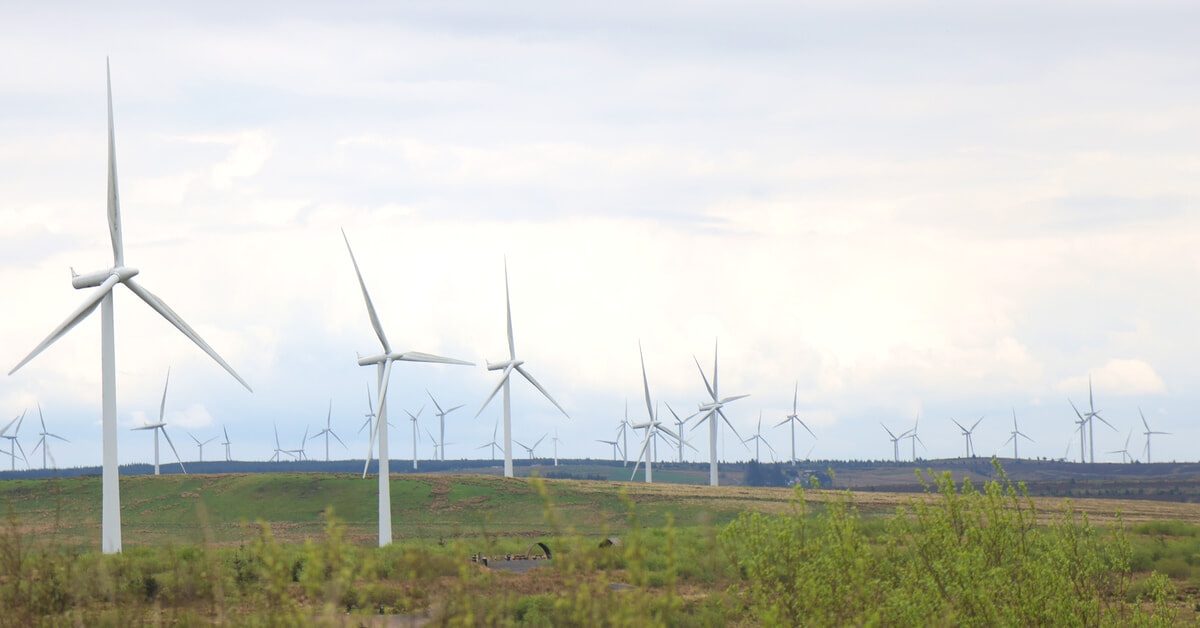CHOOSE
A DIFFERENT TERRITORY

One of the first acts of the new UK administration has been to introduce an onshore wind target of 30GW by 2030, firmly positioning this technology as a cornerstone of its efforts to further decarbonise the UK energy mix.
This target represents a doubling of the UK’s operational onshore wind fleet, from 15 to 30 GW. In real terms, this means manufacturing, constructing, and grid connecting around 4,000 turbines in the next six years.
New onshore wind projects need planning permission from their Local Planning Authority. The recent planning reform in England has moved to make this easier and brings policy in line with other parts of the UK1, but getting consent is still by no means a given – UK Government data shows that 491 MW of onshore wind was refused planning permission in first quarter of 2024 alone.
So where should we build this much needed new capacity to generate cleaner and more cost-effective energy?
An obvious target to look at is repowering the UK’s oldest wind farms. 0.57GW of onshore wind capacity is now over 20 years old, totalling over 850 turbines across nearly 70 sites2. Repowering projects also need planning permission, but these oldest wind farms are typically located in areas that have the best wind conditions, and are now running small, inefficient, and aging assets.
The average size of onshore wind turbines built prior to the year 2000 in the UK was 0.5MW3. Now, sizes of 4-6MW are common for new developments. Repowering the oldest sites with newer turbines can therefore generate much more power for the same (and in some case a reduced) physical footprint.
Whilst on paper, this seems like an attractive option for asset owners, there is currently no financial incentive for them to upgrade these prime locations to generate more clean power.
Our analysis shows that 98% of onshore wind capacity in the UK that’s over 20 years old is registered via the Renewables Obligation (RO) scheme . This support mechanism was introduced in 2002, and mandates UK electricity suppliers to purchase “green certificates” from renewables generators, giving operators of those wind farms an additional source of income to the wholesale price of their electricity generation.
In recent years, the combined income from these certificates, coupled with the huge rise in the wholesale price of electricity, has made it possible for generators to run wind farms for longer, despite their increasing maintenance costs; this has resulted in many assets being operated well beyond their originally planned lifetime, which often involves extending the existing original planning consent.
For early entrants to the Renewables Obligation, their participation in the scheme ends in April 20274, leading most developers to conclude it is not worth considering repowering opportunities before this date. Simply put, this financial mechanism is blocking the most productive and suitable sites with ageing, small turbines.
Furthermore, when early entrants retire out of the RO, these older sites will likely come offline en masse, risking a supply chain bottleneck in the nascent decommissioning industry and a rush to secure any changes to existing grid connections. This will delay new and more efficient capacity coming online even further - ultimately to the detriment of our climate and energy security goals.
One option Minsters should consider is to revise and extend the RO scheme for those operators running the oldest onshore wind assets. If a site is repowered, scheme membership would persist beyond old capacity coming offline. Once connected to the grid, the total repowered capacity at the same site would be given a reduced award, at such a rate that would cover any shortfall the operator might incur from the original installation leaving the RO. This would act to incentivise the maximum possible capacity additions within the shortest timeframe. A six-month extension beyond the original expected closure date of April 2027 would also allow operators sufficient time to remove and replace the old assets.
Regardless of the specific mechanism for delivery, the recently founded Onshore Wind Industry Taskforce needs to put the issue of decommissioning older wind turbines high up on its priority list. By 2030, 3.3GW of existing onshore wind capacity in the UK will be over 20 years old, so it is vital we actively exploit the potential of our current crop of plants for repowering, if the 30GW target is to be met. We only can do this if we choose to be proactive and repower the UK with additional clean energy.